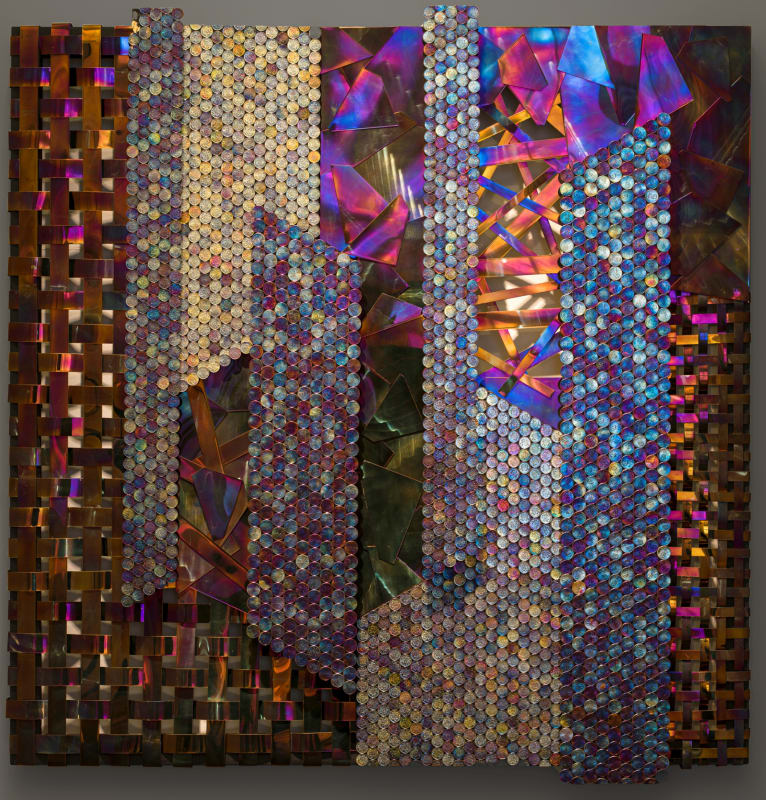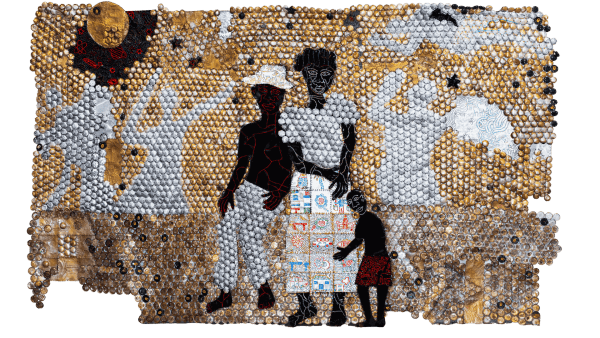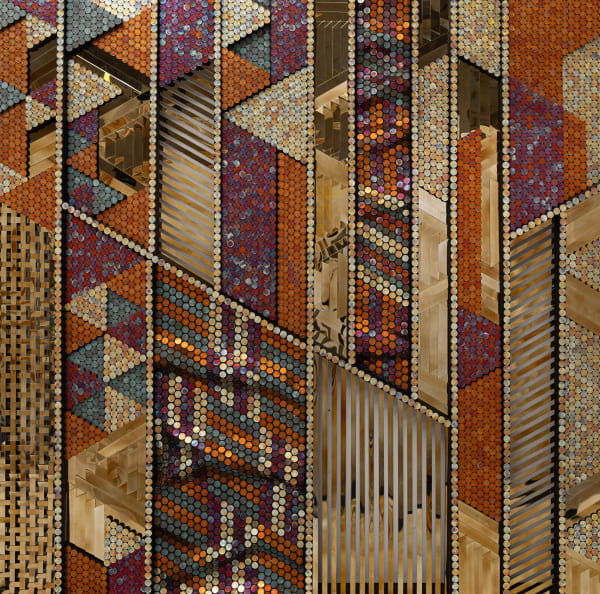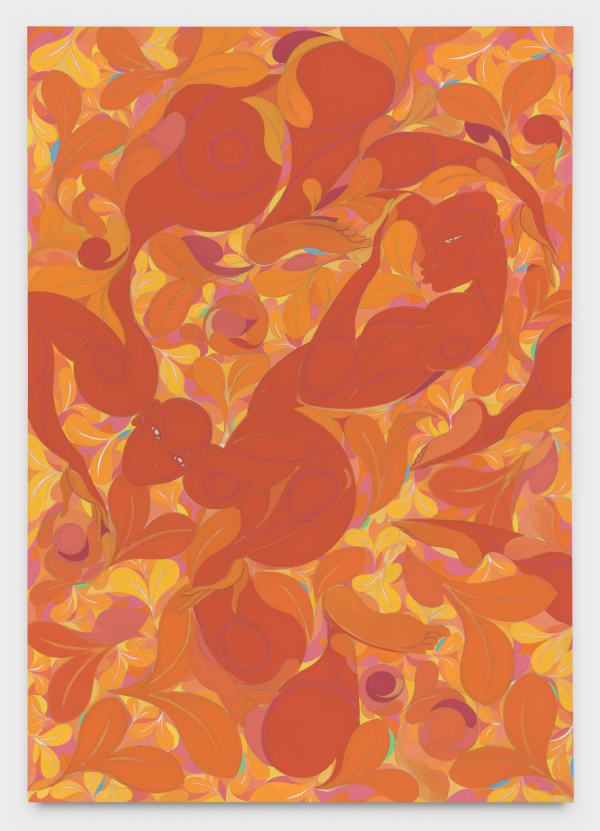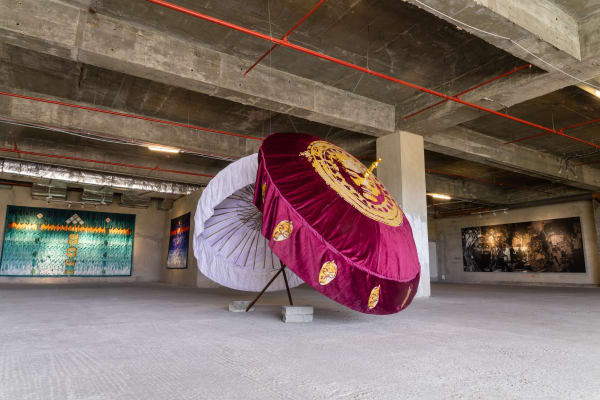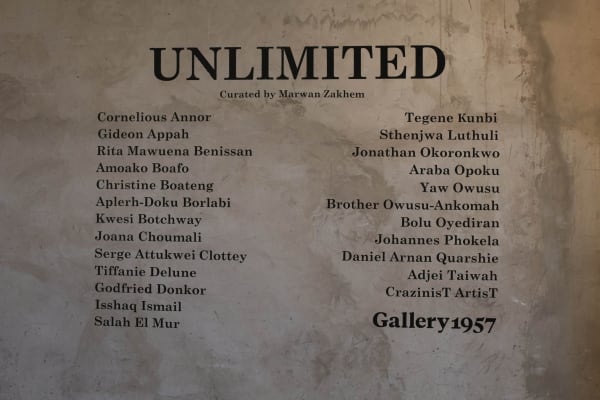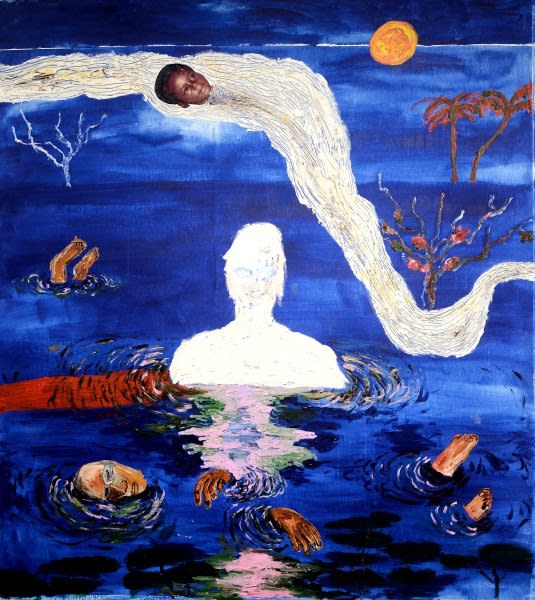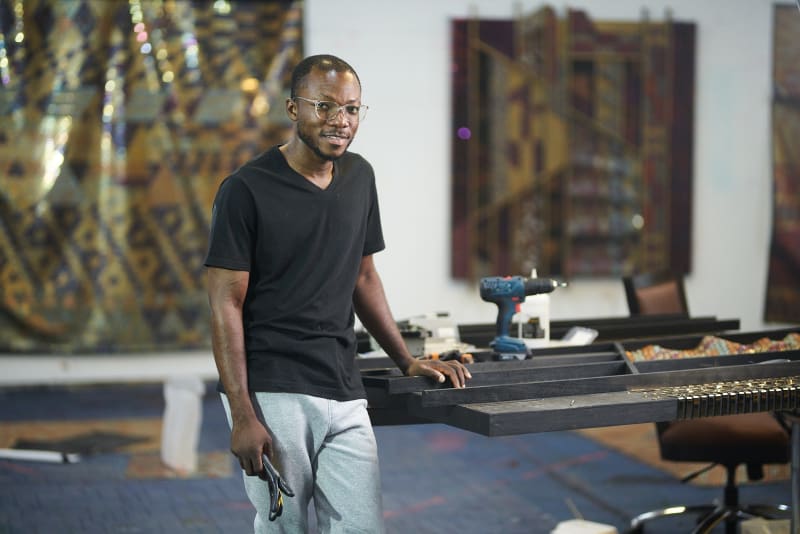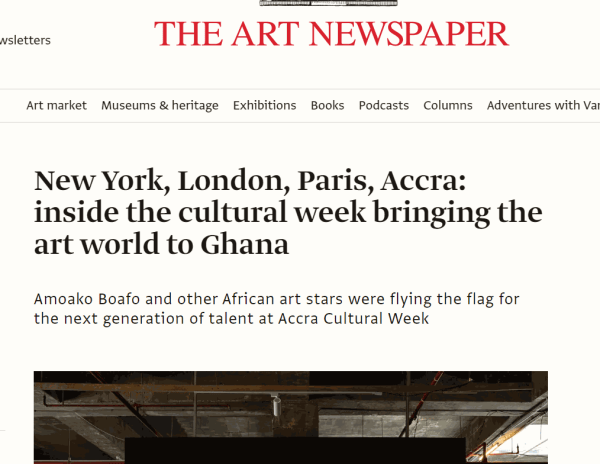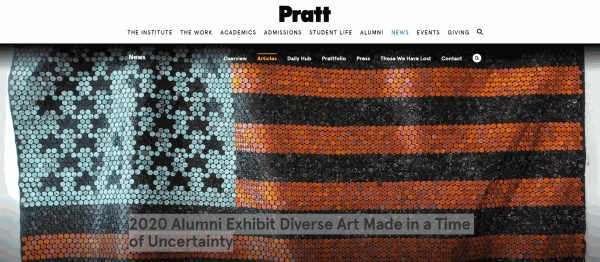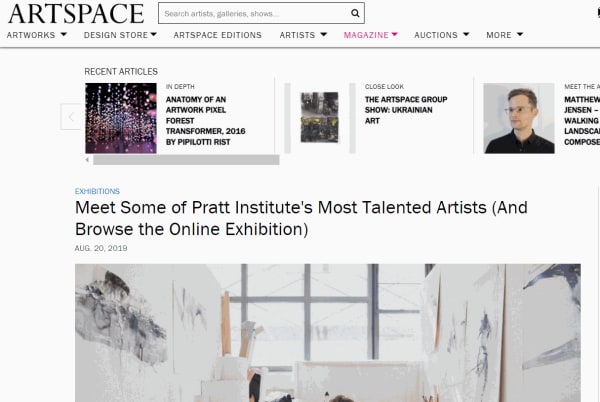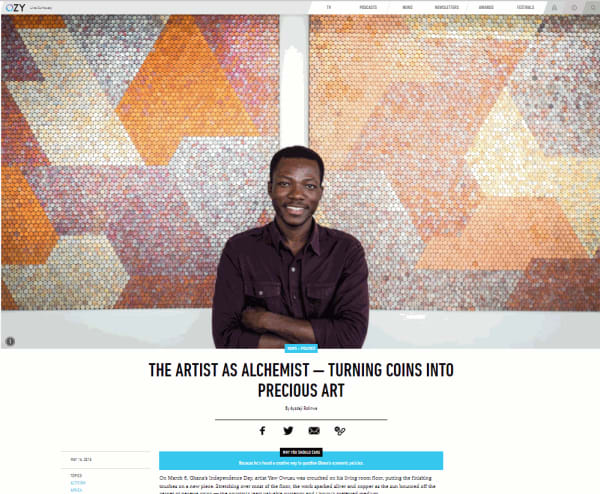Yaw Owusu Ghana, b. 1992
Owusu began his artistic career as a more traditional painter, producing portraits of political figures, popular culture, and royalty. Having spent this time honing his technical skills, Owusu set out to create more symbolic representations of the political and socio-economic narratives he has always been interested in. His more recent oeuvre speaks to shifting meaning of value across economic, ecological, and socio-historical registers. Owusu is most known for working with pesewa coins, which were introduced in Ghana in 2007 to address rampant inflation. The ongoing nature of the economic crisis signals the failure of this measure, and today these copper coins bear little value. Central to Owusu’s process is having to negotiate with Ghana’s Central Bank to procure enough pesewas and not heeding their stipulations that the coins be left intact. By performing various chemical treatments on them (e.g., using salt from Ghana’s south coast or vinegar from the central and eastern regions to signify local industries), he reveals the various ways in which currencies age and transform with use. The use of pesawas specifically calls into question Ghana’s economic and political independence.
Newer works have incorporated a greater range of materials to interrogate global political and economic orders. Working with the US penny, Owusu explores its symbolic weight, its relationship to Abraham Lincoln (the figurehead on the coin) and thus the Transatlantic Slave Trade, of which Ghana was an epicentre. The use of metals like steel reference the seeming indestructibility of US capitalism, especially the industrial growth of its exemplar, New York. Yet, 9/11 as well as the “boom and bust” cycles of capitalism demonstrate how quickly these structures can disintegrate, a duality he mines in his art. Metals such as gold, copper, and bronze feature in his work to evoke the history of currencies that predate the modern monetary order, tracing the evolution of financial structures that dominate contemporary life. Meanwhile, the incorporation of natural materials such as wood signifies the transition from a natural world to a manufactured one, as part of the precarious evolution of global economies. His sculptures investigate questions as varied as how labour, and its exploitation, is central to the creation of economic value, how mapmaking solidified colonial power relations worldwide, and how flags symbolise the myth of nation states as bastions of security and prosperity for all.
-

UNLIMITED III: The African Family
Curated by Marwan Zakhem 23 May - 13 Jul 2024The first and second iteration of this monumental group exhibition took place respectively in 2022 and 2023. Both editions, curated by Gallery 1957’s founder director Marwan Zakhem, invited artists from...Read more -

Yaw Owusu - Everything You Touch is Gold
Gallery II, Accra 16 Sep - 28 Oct 2023Yaw Owusu’s ‘Everything You Touch Is Gold’ at Gallery 1957 comprises a series of coins on wooden panels and canvas which in their intriguing interplay of colour, texture and abstract...Read more -

In and Out of Time, Curated by Ekow Eshun
Third Floor, Galleria Mall, Accra 16 Sep 2023 - 4 Jan 2024Drawing from the Ghanaian concept of Sankofa - to return to the past in order to move forward - the exhibition explores African cultural notions of non-linear time and brings...Read more -

Unlimited II
Galleria Mall, Third Floor, Kempinski Hotel Gold Coast, Accra 15 Jun - 12 Aug 2023Gallery 1957 is pleased to present UNLIMITED II . The first edition of UNLIMITED in 2022 showcased works which grappled with a creative humanisation of locality and this sentiment continues...Read more -

Unlimited
Kempinski Hotel Gold Coast, Ghana 10 Nov 2022 - 18 Jan 2023Gallery 1957 is pleased to present UNLIMITED , the first of its kind group exhibition of monumental, large-scale works of art in a 1,400-square-metre unfinished industrial space that has never...Read more -

Group Show - The Storytellers
London 26 May - 16 Jul 2022The art of storytelling runs deep in any society. Even before the written word, the oral tradition of telling tales and experiences to one’s community was a way to build...Read more -

Yaw Owusu - Reflections from the (In)Visible Past
London, UK 25 Nov 2021 - 15 Jan 2022A Penny for Your Thought Yaw Owusu’s new series of monumental sculptures feature dynamic, abstract geographies that interrogate systems of value, mobility, and power. Composed mainly of Ghanaian pesewa coins,...Read more -

18:20 The Collection
Accra, Gallery I 25 Aug 2018 - 5 Jan 2019Gallery 1957 presents a group exhibition highlighting several reputable artists from our collection. All respected in the African art scene, these artists explore themes such as identity, family and society...Read more -

Yaw Owusu-All That Glitters
Accra, Gallery I 29 Jun - 5 Aug 2017Yaw Owusu demonstrates the transformative tendencies of copper coins by reimagining them as both material and pallet. His recent work activates urgent questions around economic and political independence in Ghana....Read more -
16:16 The Collection
Accra, Gallery I 16 Dec 2016 - 26 Jan 2017.Read more
Visual artist Yaw Owusu was born in 1992 in Ghana and currently lives in New York, USA, two locations that feature centrally in his work. These are primarily sculptural installations that incorporate found objects, transforming everyday materials that bear little commodity value and yet symbolise the might of global production and finance into art objects of surpassing beauty.
Yaw Owusu gained his BFA in Painting from the Kwame Nkrumah University of Science and Technology, Ghana and his MFA from Pratt Institute, USA. His solo exhibitions have spanned galleries in Ghana, the UK, and USA, while galleries such as Christie’s (UK), Sotheby’s Institute (USA), MACAAL (Morocco) have included his art in group exhibitions. He was awarded the Kuenyehia Art Prize for Contemporary Ghanaian Art in 2018 and the Pratt Institute’s Outstanding Student and Circle Awards in 2020, and has held residencies at Efie Gallery (UAE) and Cope NYC (USA).
-

In-Depth Feature of Gallery 1957 in The New York Times
23 Mar 2024Gallery 1957 would like to extend our gratitude to The New York Times and Ginanne Brownell for the in depth feature “From Africa to Hong...Read more -

Yaw Owusu and Serge Attukwei Clottey shorlisted for The Norval Sovereign African Art Prize
2023 3 Nov 2022Norval Foundation and The Sovereign Art Foundation (SAF) announced the names of 30 artists shortlisted as finalists for the second edition of The Norval Sovereign...Read more -

Yaw Owusu to be Exhibiting at Christie's London
with El Anatsui and Isshaq ismail: Material Earth 9 Apr 202228th April - 13th May 2022Read more
-

New York, London, Paris, Accra: inside the cultural week bringing the art world to Ghana
Stephen Smith, The Art Newspaper, 22 Sep 2023 -
The Storytellers @ Gallery 1957, London
Juxtapoz, 24 Jun 2022 -

2020 Alumni Exhibit Diverse Art Made in a Time of Uncertainty
Pratt, 1 Jun 2022 -
Dubai Gallery presents Ghanaian contemporary art at Christie’s London
Arab News, 9 May 2022
-

‘The eyes of the art world are on Ghana right now, and they like what they see’
Christie's, 29 Apr 2022 -
Christie’s Collaborate With Efie Gallery, Dubai, to Present Material Earth
Sara Macdonalds, Christies , 8 Apr 2022 -

Eye of the Collector tries out new fair format in a neo-Gothic setting
Gareth Harris, Art Newspaper, 9 Sep 2021 -

Gallery 1957 Heralds a New Era for West African Artists on Their Own Terms
Charlotte Jansen, Artsy, 15 Dec 2020
-

Time to move on from Black History Month?
Yaw Owusu, Liverpool Museum, 9 Oct 2020 -

Art as a Political Critique: a Dialogue with Yaw Owusu
Africa in Dialogue, 16 Sep 2019 -

Meet Some of Pratt Institute's Most Talented Artists (And Browse the Online Exhibition)
ArtSpace, 20 Aug 2019 -

Q & A with the fascinating Yaw Owusu
Daniel Neilson, Time Out Accra, 14 Nov 2017
-
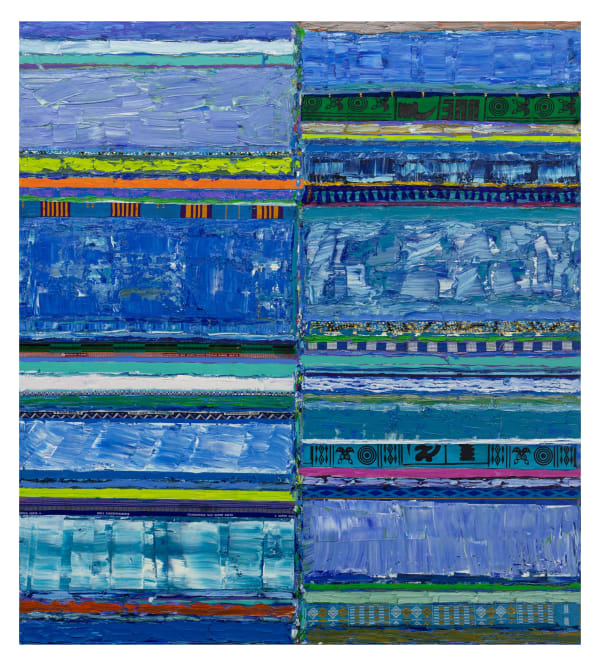
Art X Lagos 2024
Yaw Owusu, Larry Amponsah, Tegene Kunbi & Nana Bruce 31 Oct - 3 Nov 2024Gallery 1957 is proud to present a group exhibition featuring Yaw Owusu, Larry Amponsah, Tegene Kunbi, and Nana Bruce for the 9th edition of Art...Read more -
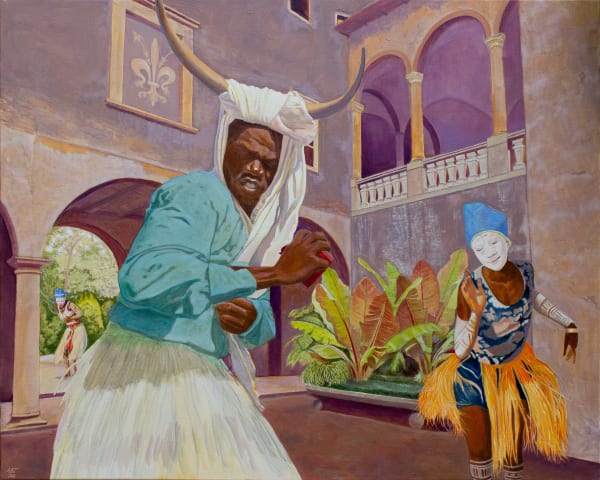
1-54 London 2024
Rita Mawuena Benissan, Modupeola Fadugba, Kelvin Haizel, Yaw Owusu, and Arthur Timothy 11 - 13 Oct 2024For it’s 5th presentation at 1-54 London, Gallery 1957 proudly presents a group exhibition of artists whose works span a range of media and galvanize...Read more -

Frieze Seoul 2024
Amoako Boafo, Kwesi Botchway, Rita Mawuena Benissan, Modupeola Fadugba, Arthur Timothy, and Yaw Owusu 4 - 7 Sep 2024For the 2024 edition of Frieze Seoul,Gallery 1957 proudly presents a group show featuring a multitude of exalted artists from the continent and the diaspora....Read more -

Art X Lagos 2023
Yaw Owusu, Priscilla Kennedy and Daniel Arnan Quarshie 2 - 5 Nov 2023Gallery 1957 is proud to present a group show featuring Yaw Owusu, Priscilla Kennedy, and Daniel Arnan Quarshie for the 8th edition of Art X...Read more
-
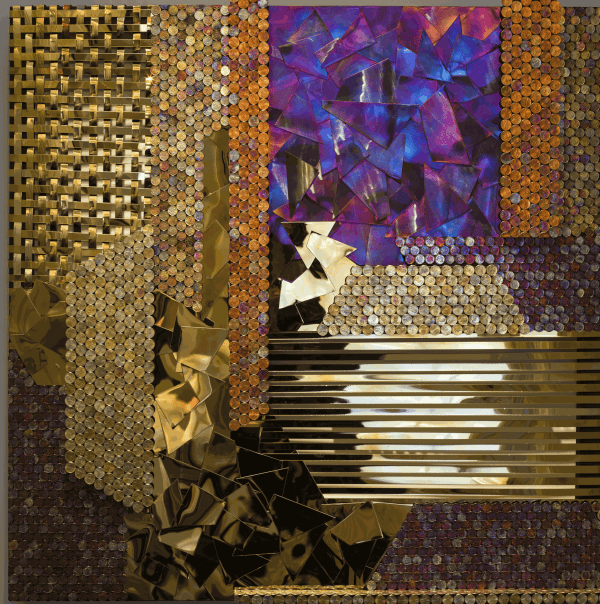
1-54 Paris, 2022
Yaw Owusu, Joshua Oheneba-Takyi 7 - 10 Apr 2022Gallery 1957 participates for a sixth year running at 1-54 Contemporary African Art Fair, held at Christie's salesroom in Paris, 7th - 10th April 2022....Read more -
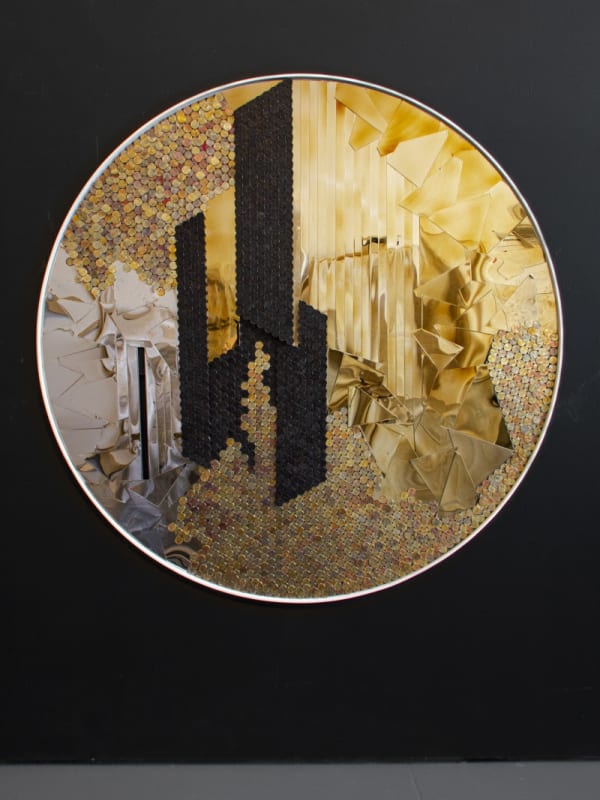
Eye of The Collector
Gustavo Nazareno and Yaw Owusu 9 - 11 Sep 2021Gallery 1957 is delighted to participate in the first edition of the boutique art fair Eye of the Collector with new work by Gustavo Nazareno...Read more -
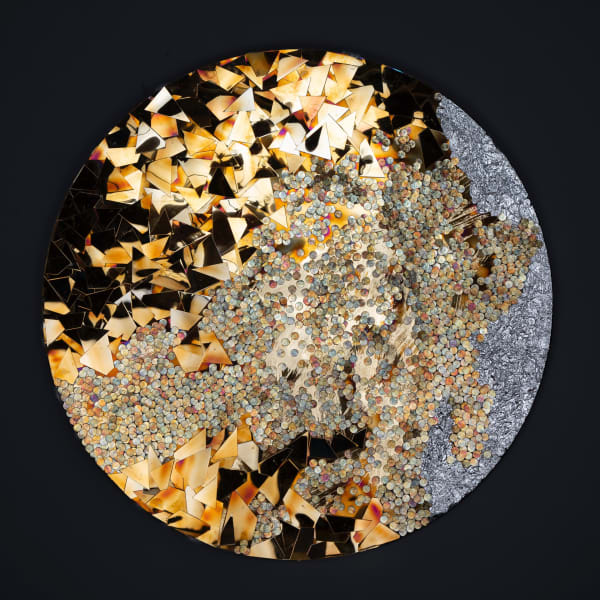
Volta
Yaw Owusu 4 - 8 Mar 2020Read more

